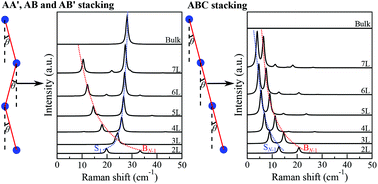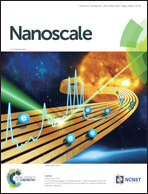Interlayer bond polarizability model for stacking-dependent low-frequency Raman scattering in layered materials†
Abstract
Two-dimensional (2D) layered materials have been extensively studied owing to their fascinating and technologically relevant properties. Their functionalities can be often tailored by the interlayer stacking pattern. Low-frequency (LF) Raman spectroscopy provides a quick, non-destructive and inexpensive optical technique for stacking characterization, since the intensities of LF interlayer vibrational modes are sensitive to the details of the stacking. A simple and generalized interlayer bond polarizability model is proposed here to explain and predict how the LF Raman intensities depend on complex stacking sequences for any thickness in a broad array of 2D materials, including graphene, MoS2, MoSe2, NbSe2, Bi2Se3, GaSe, h-BN, etc. Additionally, a general strategy is proposed to unify the stacking nomenclature for these 2D materials. Our model reveals the fundamental mechanism of LF Raman response to the stacking, and provides general rules for stacking identification.

- This article is part of the themed collections: Editor’s Choice: Optical Spectroscopy of 2D materials and 2017 Nanoscale HOT Article Collection


 Please wait while we load your content...
Please wait while we load your content...